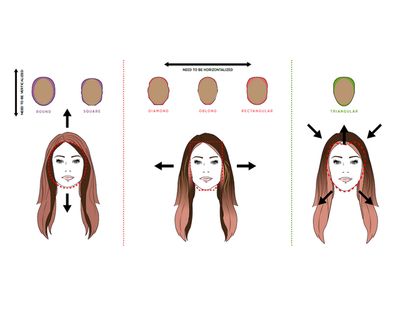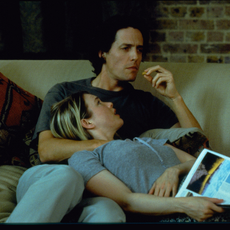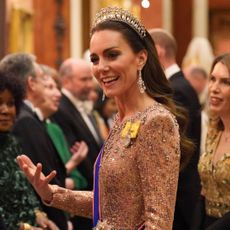Hair contouring (AKA how to get a hairstyle to flatter your face)
Plus, it's WAY easier than make-up contouring

Plus, it's WAY easier than make-up contouring
If you’ve sat for hours at your mirror, wielding various make-up brushes and despairing that you’ll ever get contouring just right, don’t panic: a new type of contouring is about to take over our lives. It’s hair contouring, and it’s going to be massive.
Inspired by the must-have make-up trend pioneered by Kim Kardashian et al, hair contouring is a colour application technique that can alter the appearance of your face shape, by accentuating your favourite features and enhancing your skin tone – all without a make-up brush in sight.
By carefully placing custom colours around the face, and using light to your advantage, you can make the most of this new trend to highlight and shadow targeted areas – and it’s much simpler than painting what seems like a thousand shades of foundation onto your T-zone and carefully blending each millimetre of concealer, just so.
But it's the same principles: The artful placement of colour and careful choice of complimentary tones can work wonders, making your face seem more defined and features more accentuated.
So what type of hair contouring should you go for? It all depends on what you’re trying to achieve with your glossy optical illusion. Darker tones create shadows and can be used to shorten or narrow the face shape, while lighter tones elongate and lengthen the face shape by reflecting light. The colours are carefully selected based on your skin tone, and positioned according to your facial structure and features.
If you’re not quite sure which face shape you have or how to even begin, the experts at L’Oréal have compiled the helpful illustration above, which shows you what shape your face is, and which hair colours you should be aiming for.
Marie Claire Newsletter
Celebrity news, beauty, fashion advice, and fascinating features, delivered straight to your inbox!
**Grabs mirror closest to hand to try and figure out if our face is square or round**
L’Oréal have also helpfully written a key to figuring out what face shape you have, just in case you're still squinting at that mirror. They say:
You have a round face if... The length and width of your face is equal. Characteristics include a shorter forehead and chin and a rounded jawline.
You have a square face if... The length, width and jawline are equal in length. Characteristics include wider facial features, sharper jawline and shorter forehead.
You have a rectangular face if... This face shape has similar characteristic to the oblong face being longer than it is wide but with a more defined angular jawline and a broader forehead.
You have an oblong shape face if...The length of your face is approx. more than 1 ½ times longer than wide, with a broad forehead, cheekbones and jaw line. The shape will roughly resemble a rectangle with softer corners.
You have a diamond shape face if... Your cheekbones are the wider than your forehead and jawline.
You have a triangular/ heart shape face if... You have a wider forehead and a narrower pointed chin, similar to an inverted triangle.
While we’re all for DIY hair treatments – and have, like everyone, experienced a couple of disastrous home attempts in our time – we reckon that hair contouring, being such a fine art, should be left to the professionals. But if you are going to attempt the technique at home, it’s worth remembering a few things.
Firstly, don’t forget to accurately identify your unique face shape and bone structure by sweeping your hair backwards to expose the full outline of your face. Secondly, to keep the effect looking natural, the shades you use should not go two shades above or below your natural hair colour. Thirdly, don’t worry about maintaining the look too much – the great thing about this trend (unlike the make-up form) is that it’s low-maintenance and fuss-free, and that roots aren’t an issue as the hair grows out.
We’re looking forward to spotting this look on the red carpet as awards season begins…
The leading destination for fashion, beauty, shopping and finger-on-the-pulse views on the latest issues. Marie Claire's travel content helps you delight in discovering new destinations around the globe, offering a unique – and sometimes unchartered – travel experience. From new hotel openings to the destinations tipped to take over our travel calendars, this iconic name has it covered.


